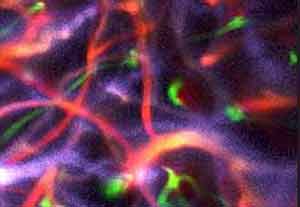- Home
- Editorial
- News
- Practice Guidelines
- Anesthesiology Guidelines
- Cancer Guidelines
- Cardiac Sciences Guidelines
- Critical Care Guidelines
- Dentistry Guidelines
- Dermatology Guidelines
- Diabetes and Endo Guidelines
- Diagnostics Guidelines
- ENT Guidelines
- Featured Practice Guidelines
- Gastroenterology Guidelines
- Geriatrics Guidelines
- Medicine Guidelines
- Nephrology Guidelines
- Neurosciences Guidelines
- Obs and Gynae Guidelines
- Ophthalmology Guidelines
- Orthopaedics Guidelines
- Paediatrics Guidelines
- Psychiatry Guidelines
- Pulmonology Guidelines
- Radiology Guidelines
- Surgery Guidelines
- Urology Guidelines
Enhanced 3D Imaging shall improve treatment for brain diseases

Researchers have developed a combo of commercially available hardware and open-source software, known as PySight, that improves rapid 2D and 3D imaging of the brain and other tissues. This shall enable integration of the fastest 3D imaging solution available today, the advance in microscopy could help scientists to better understand brain dynamics and discover new treatments for health problems such as stroke, epilepsy and dementia.
In Optica, The Optical Society's journal for high impact research, the researchers describe PySight, which serves as a photon counting add-on for laser scanning microscopes. Geared with this novel combination of software and hardware, they improved the quality of 2D and 3D imaging of neuronal activity in the living brain.
Because it can image deep into tissue, a laser-based technique known as multiphoton microscopy is often used to study the rapid activity patterns of neurons, blood vessels and other cells at high resolution over time. This microscopy method uses laser pulses to excite fluorescent probes, eliciting the emission of photons, some of which are detected and used to form 2D and 3D images.
Trying to capture the full breadth of neuronal activity with multiphoton microscopy forces scientists to image faster. As a result, fewer and fewer photons become available to form images, much like taking a photo with shorter and shorter exposure times. The challenge becomes how to get meaningful images under these dim conditions.
“To overcome this hurdle, microscopists have used a detector-readout method called photon counting,” said research team leader Pablo Blinder from Tel Aviv University in Israel. “However, because its implementation required extensive electronics knowledge and custom components, photon counting has never been widely adopted. In addition, commercially available solutions were ill-suited to perform very fast imaging such as required for 3D imaging.”
In addition to advancing neural imaging research, PySight’s improved sensitivity could facilitate rapid intraoperative identification of malignant cells in human patients using multiphoton microscopy. PySight’s novel approach for reconstructing 3D scenes could also improve performance of light detection and ranging, or LIDAR. This could help lower the costs of self-driving cars that use LIDAR to map their surroundings.
Detecting single photons in 3D
PySight provides high spatiotemporal resolution while producing a data stream that scales with the number of detected photons, not the volume or area being imaged. "Conventional data acquisition hardware stores the brightness of every pixel or 3D voxel even when it is zero because no photons were detected in that particular location,” Blinder explained. “PySight, however, only stores the precise detection time of each photon, allowing researchers to conduct rapid imaging of large volumes over long sessions, without compromising spatial or temporal resolution."
To reconstruct a multidimensional image, knowing when each photon hits the detector isn’t enough. It’s necessary to also know where it originated in the brain. “This is even trickier if you want to simplify the system and avoid synchronizing the different scanning elements,” said Blinder. “To accomplish this, our software reads a list of photon arrival times along timing signals from the scanning elements, determines the origin of each photon within the sample and generates 3D movies that can span three or more dimensions.”
The photon arrival times are generated by a device known as a multiple-event time digitizer, or multiscaler, which records the times with a precision of 100 picoseconds. Another key component was an off-the-shelf resonant axial scanning lens that changes the focal plane hundreds of thousands of times per second. This lens was used to rapidly scan the laser beam across different depths within the brain and allowed the team to reconstruct continuous 3D images.
Easier, cost-effective, continuous 3D imaging
“The multiscaler we used hasn’t been applied to neuroimaging because the output isn’t easy to interpret, and using a resonant axial scanning lens for bioimaging has required custom-made hardware to generate 3D renderings from the acquired data,” said Blinder. “PySight turns the output from both components into a 3D movie effortlessly. Because the software is freely available to the public, it should greatly aid labs previously deterred by the high technical barrier that accompanied 3D imaging.” Because of its generic application interface, PySight could also be used to interpret similar photon detection time lists from suitable hardware devices.
To test whether PySight was truly plug and play, the researchers walked with their multiscaler to another imaging lab on the Tel Aviv University campus. They were able to simply plug in the device, download the PySight software and start recording odor responses in fruit flies genetically modified to express voltage indicators — a fast probe for neuronal activity — in a subset of their neurons.
In addition to continuing to improve the PySight software, the researchers would like to add support for other microscopy imaging methods such as fluorescence lifetime imaging, which relies on the timing of each photon relative to its originating laser pulse. Because the software is open source and provides direct access to photon arrival times, it enables other scientists to add new features and meet their specific needs.
For more details click on the link: DOI: https://doi.org/10.1364/OPTICA.5.001104

Disclaimer: This site is primarily intended for healthcare professionals. Any content/information on this website does not replace the advice of medical and/or health professionals and should not be construed as medical/diagnostic advice/endorsement or prescription. Use of this site is subject to our terms of use, privacy policy, advertisement policy. © 2020 Minerva Medical Treatment Pvt Ltd